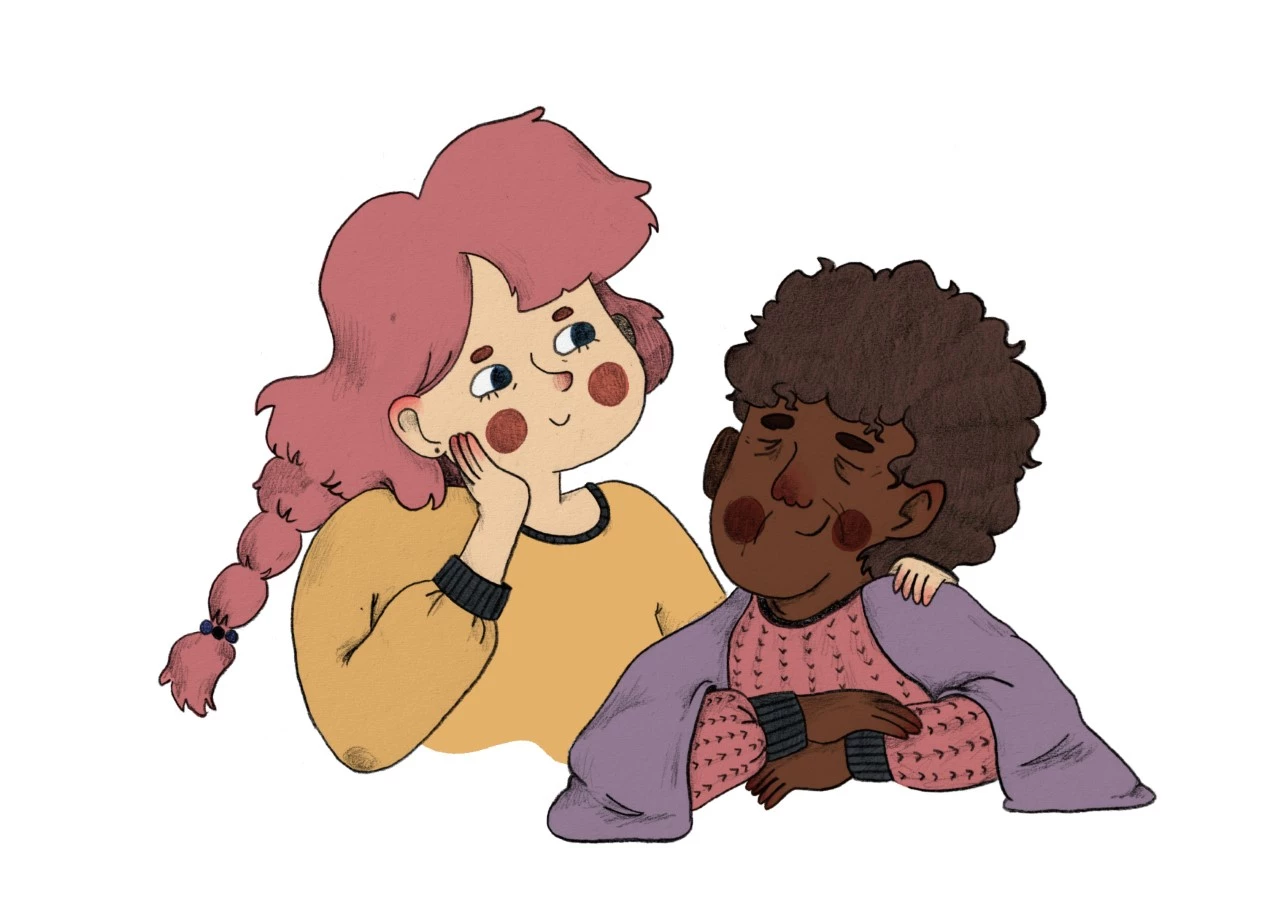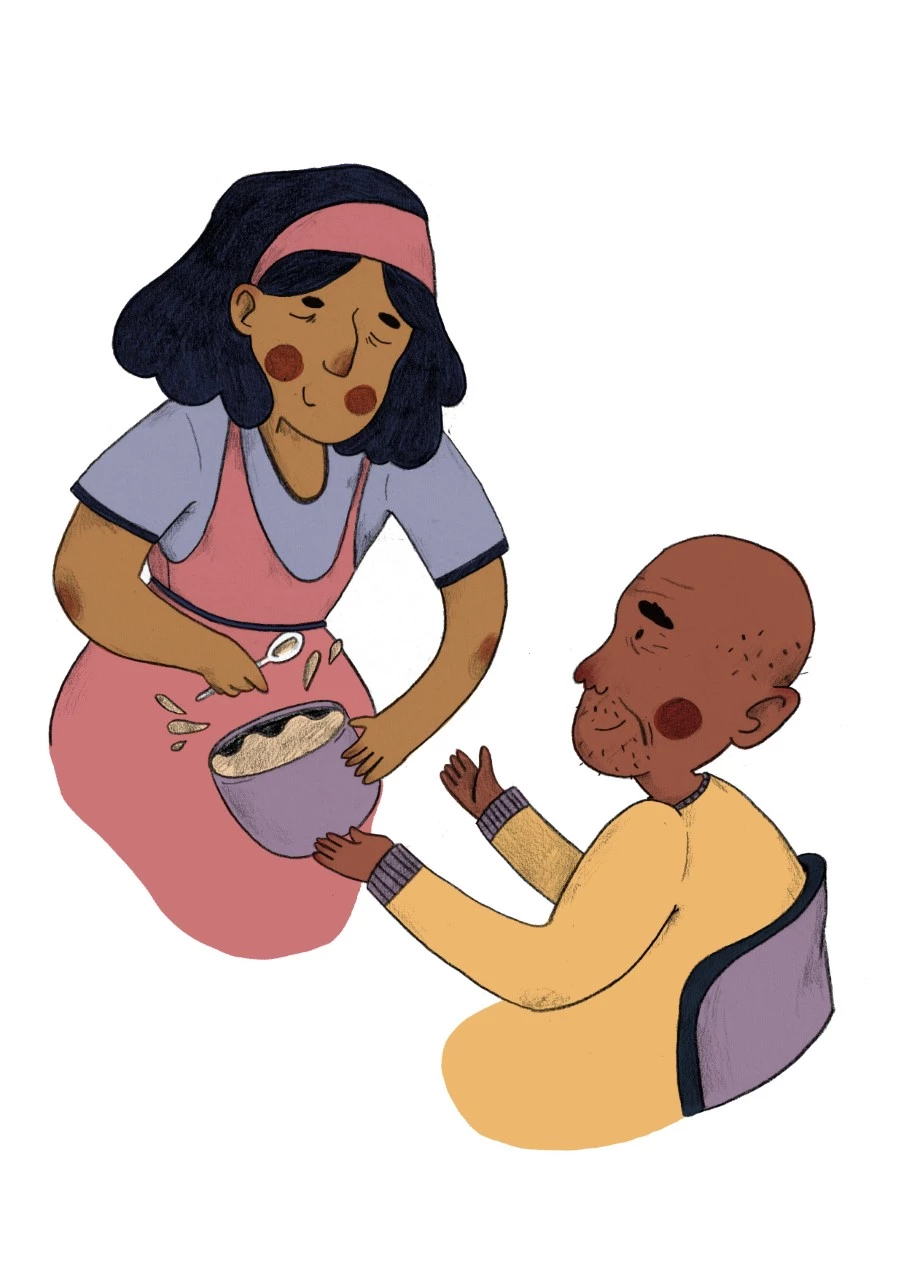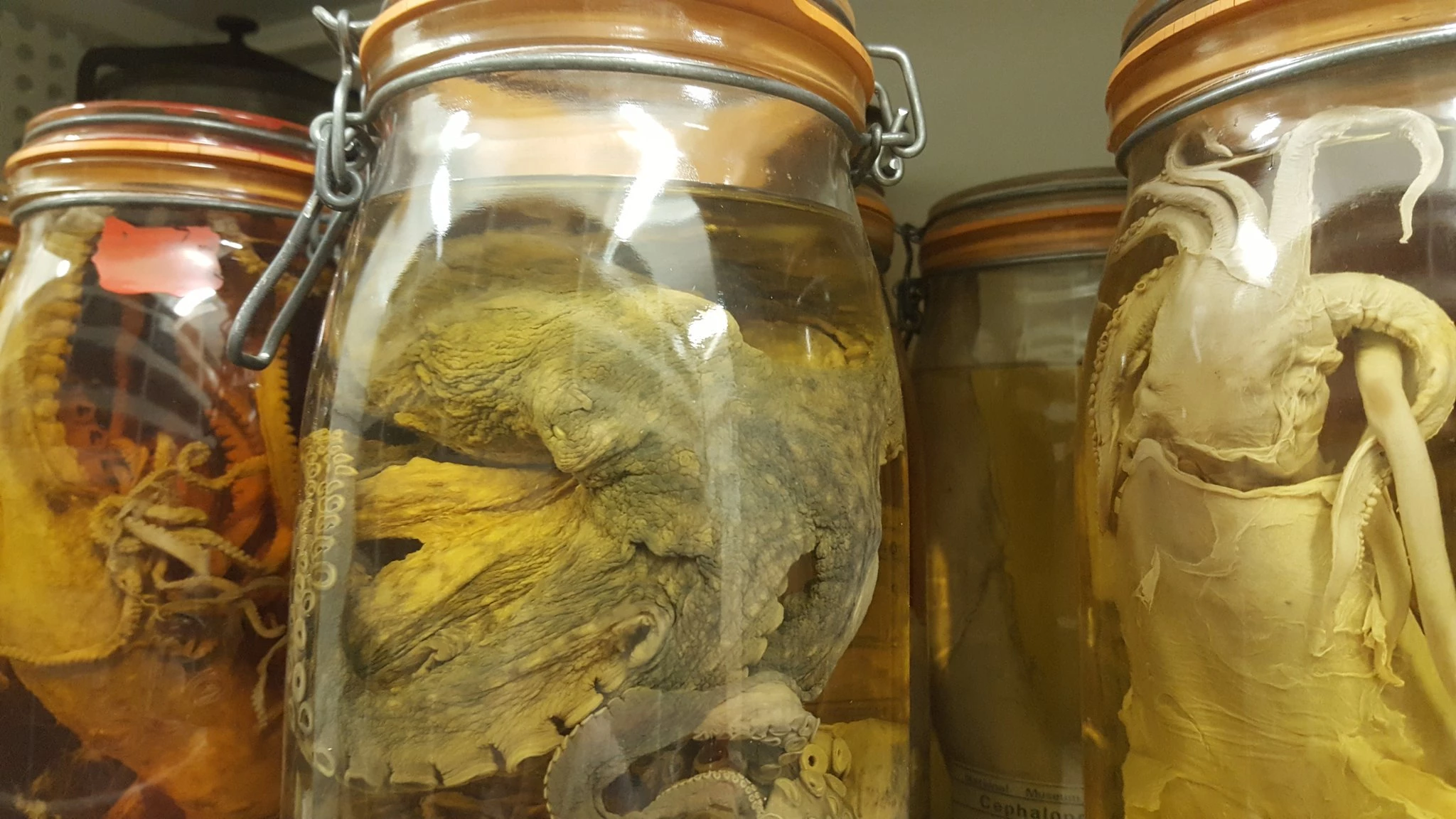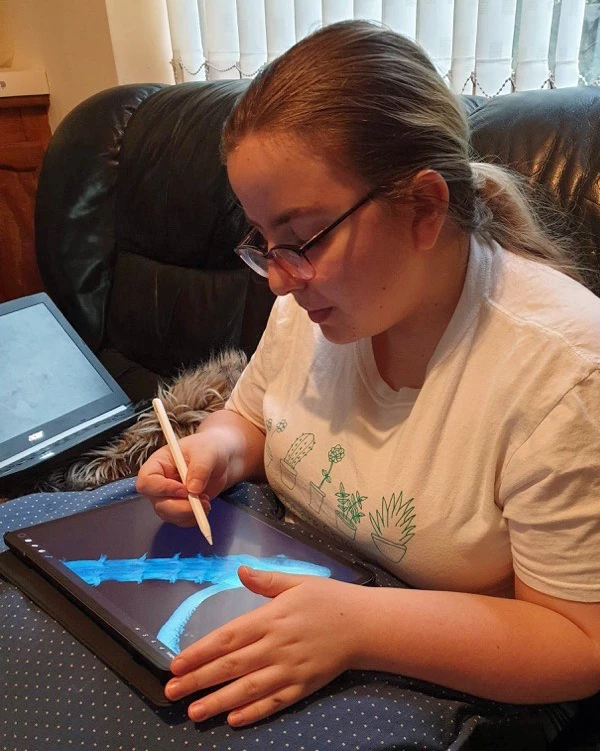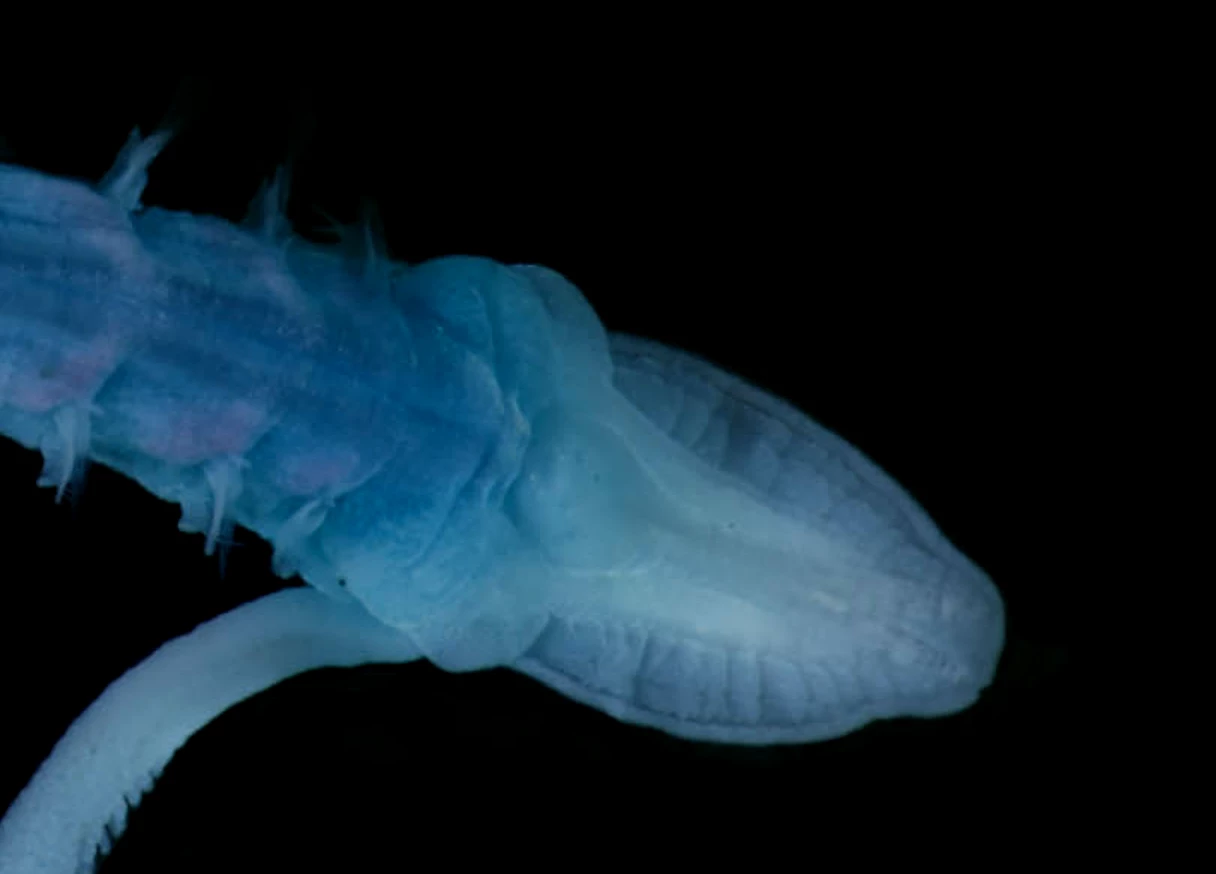Cynnwys Gofalwyr
, 23 Tachwedd 2020
Gwnaeth adroddiad State of Caring 2019 Gofalwyr Cymru amcangyfrif fod 400,000 o ofalwyr yng Nghymru y llynedd. Roedd Cyfrifiad 2011 yn gosod y ffigwr llawn fel 370,000 neu 12% o’r boblogaeth, gyda 30,000 o’r gofalwyr hynny o dan 25 oed a nodwyd fod gan Gymru y gyfradd uchaf o ofalwyr o dan 18 oed yn y DU. Mae’r ffigurau hyn i gyd yn cyfeirio at ofalwyr di-dâl, sy’n cefnogi oedolyn neu blentyn gydag anabledd, salwch corfforol neu feddyliol, neu sydd yn cael eu heffeithio drwy gamddefnyddio sylweddau. Nid yw’n cynnwys y rheiny sy’n gweithio mewn swyddi gofal am dâl.
Amcangyfrifir y bydd y rhan fwyaf ohonom, tri allan o bump, yn dod yn ofalwr ar ryw bwynt yn ystod ein bywydau.
Wrth ystyried y rhifau anferthol hyn a’r ffaith fod y rhan fwyaf ohonom eisoes naill ai’n cael ein heffeithio, neu’n mynd i gael ein heffeithio, pam nad oes mwy o sôn am ofalwyr? Un rheswm efallai yw bod gofalwyr yn rhy brysur yn gofalu. Rwyf innau wedi bod yn ofalwr, a chyn ymuno ag Amgueddfa Cymru treuliais 30 mlynedd yn gweithio mewn gwasanaethau gofal iechyd a chymdeithasol, ac yn ystod yr adeg honno rwy’n amcangyfrif fy mod wedi gweithio gydag ychydig filoedd o ofalwyr. Mae fy mhrofiad a’m hymchwil helaeth wedi dangos fod nifer o ofalwyr yn profi unigrwydd ac ynysu cymdeithasol, yn dioddef o iechyd meddyliol neu gorfforol gwael eu hunain, a phwysau ariannol, o ganlyniad i’w rôl fel gofalwyr.
Felly beth mae hyn yn ei olygu i Amgueddfa Cymru? Un o’r amcanion ar gyfer ein strategaeth 10 mlynedd, a gaiff ei chyhoeddi yng Ngwanwyn 2021, yw ein bod yn berthnasol i bawb ac ar gael i bawb; un arall yw ein bod yn canolbwyntio ar iechyd a lles i bawb. Mae gan ein rhaglen ymgysylltu gymunedol ystod eang iawn o ffyrdd i bobl sydd ag anghenion gofal (yn sgil iechyd, anabledd neu amgylchiadau eraill) fod yn rhan o weithgareddau’r amgueddfa fel ymwelydd neu drwy ein rhaglenni gwirfoddoli ac addysg. Croesawn ofalwyr drwy gyfrwng y mentrau hyn ac mae nifer o ofalwyr sydd wedi cymryd rhan, ond nid oes gennym eto lawer iawn o adnoddau sydd wedi’u cynllunio o gwmpas anghenion gofalwyr.
Wrth edrych ymlaen at flwyddyn nesaf, mae’r Tîm Gwirfoddoli yn awyddus i ddarparu cyfleoedd sydd wedi’u cynllunio’n benodol ar gyfer gofalwyr. Gall hyn gynnwys gwirfoddolwyr sy’n gallu cefnogi gofalwyr wrth ymweld â’n hamgueddfeydd, neu, gall olygu cynllunio cyfleoedd gwirfoddoli i ofalwyr sy’n gweithio o amgylch gofynion gofalu. Ar hyn o bryd rydym yn dychmygu cymysgedd o opsiynau o ran presenoldeb – rhai cyfleoedd i ofalwyr fynychu neu ymuno â rhywbeth ar eu liwt eu hunain, eraill lle y gall gofalwyr wneud hynny gyda’r person y maen nhw’n gofalu amdanynt.
Y darlun arferol o ofalwr yw rhywun hŷn, yn gofalu naill ai am riant oedrannus neu bartner. Mae sawl gofalwr yn gweddu’r disgrifiad hwnnw, ond mae yna hefyd fwy o bobl ifanc a phlant yn gofalu nag y mae’r rhan fwyaf o bobl yn ymwybodol ohono, ac mae gofynion gofalu mewn perygl o gael effaith andwyol ar eu haddysg, eu datblygiad ac ansawdd eu bywyd yn gyffredinol. Rydym felly yn cynllunio i gynnwys rhai cyfleoedd sydd wedi’u hanelu’n benodol at ofalwyr ifanc.
Mae pobl o bob cymuned yn wynebu cyfrifoldebau gofal, a allai mewn rhai achosion fod yn fwy heriol yn sgil gwahaniaethu systemig ac anfantais. O’m profiad innau yn gofalu am fy mam-gu Iraci, gwelais fod y gwasanaethau cymorth oedd ar gael â bwriad gwirioneddol i groesawu pawb, ond bod bron pob un ohonynt wedi eu trefnu o amgylch arferion, ffyrdd o fyw, a phrofiadau bywyd poblogaeth Gwyn Prydeinig. Nid oedd y bwyd a’r gweithgareddau a gynigiwyd, a’r pynciau a drafodwyd (er enghraifft mewn therapi Atgof), yn berthnasol nac yn cynnig cysur iddi hi mewn unrhyw ffordd. Nid wyf yn awgrymu fod hyn yn rhoi dealltwriaeth i mi o brofiad rhywun arall, nid ydyw, ond mae yn rhoi dealltwriaeth i mi o gyfyngderau gweithredu un dull yn unig.
Felly rydym yn ymwybodol y bydd angen i ni weithredu mewn modd amrywiol a gofalus, a dyma lle hoffem ofyn am eich cymorth. Rydym wedi llunio arolwg sy’n amlinellu rhai o’n syniadau hyd yma, ond hoffem hefyd glywed oddi wrthoch chi os ydych chi’n ofalwr neu wedi bod yn ofalwr yn y gorffennol. Os nad ydych yn ofalwr, byddem yn ddiolchgar pe baech yn medru ein helpu drwy rannu hwn gyda gofalwyr yr ydych yn eu hadnabod.
Mae’r arolwg yn lansio ar Ddiwrnod Hawliau Gofalwyr ar 26 Tachwedd, ac ar yr un diwrnod rydym yn trefnu trafodaeth fyw ar-lein (gyda thocyn digwyddiad am ddim i bob gofalwr sy’n ymuno â ni). Gallwch ddod o hyd i fanylion ynglŷn â sut i gymryd rhan, a hefyd gweld y sesiynau ‘blasu’ ar yr un diwrnod, drwy gyfrwng tudalen Gwirfoddoli ar ein gwefan: https://amgueddfa.cymru/cymrydrhan/gofalwyr

